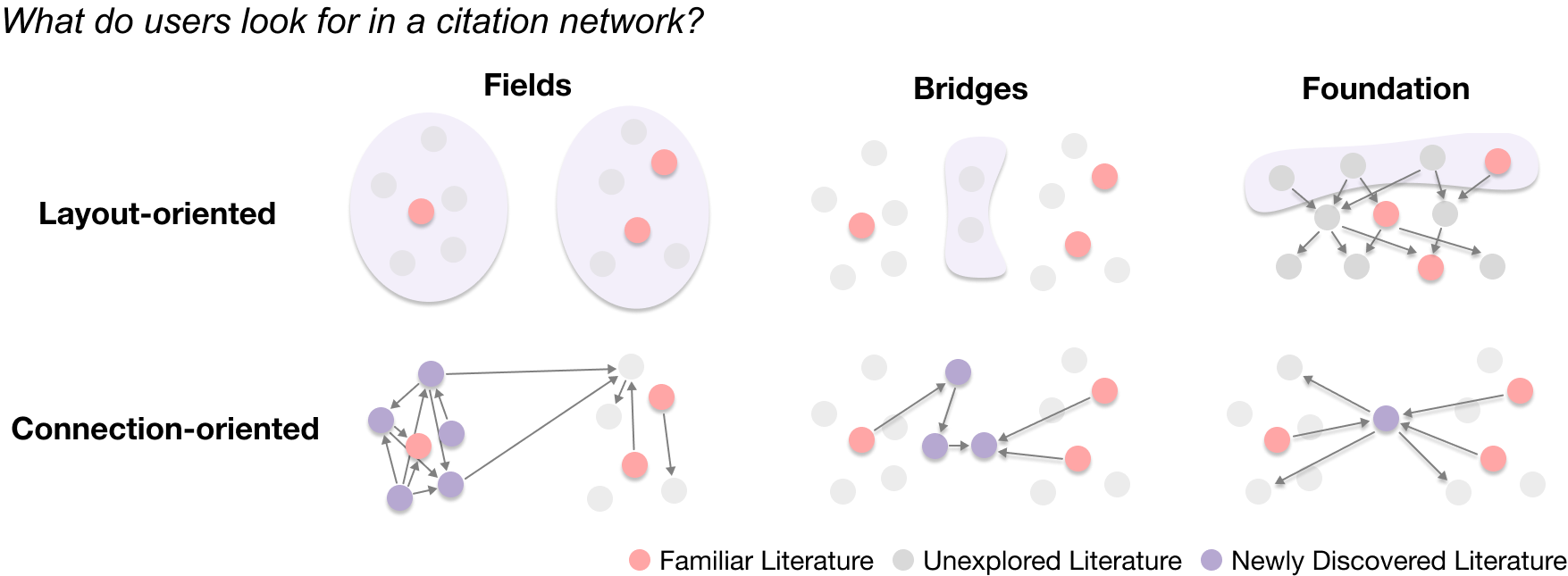Fields, Bridges, and Foundations: How Researchers Browse Citation Network Visualizations
Kiroong Choe - Seoul National University, Seoul, Korea, Republic of
Eunhye Kim - Seoul National University, Seoul, Korea, Republic of
Sangwon Park - Dept. of Electrical and Computer Engineering, SNU, Seoul, Korea, Republic of
Jinwook Seo - Seoul National University, Seoul, Korea, Republic of
Screen-reader Accessible PDF
Download preprint PDF
Room: Bayshore VI
2024-10-16T12:57:00ZGMT-0600Change your timezone on the schedule page
2024-10-16T12:57:00Z

Fast forward
Full Video
Keywords
Literature search, network visualization
Abstract
Visualizing citation relations with network structures is widely used, but the visual complexity can make it challenging for individual researchers to navigate through them. We collected data from 18 researchers using an interface that we designed using network simplification methods and analyzed how users browsed and identified important papers. Our analysis reveals six major patterns used for identifying papers of interest, which can be categorized into three key components: Fields, Bridges, and Foundations, each viewed from two distinct perspectives: layout-oriented and connection-oriented. The connection-oriented approach was found to be more reliable for selecting relevant papers, but the layout-oriented method was adopted more often, even though it led to unexpected results and user frustration. Our findings emphasize the importance of integrating these components and the necessity to balance visual layouts with meaningful connections to enhance the effectiveness of citation networks in academic browsing systems.